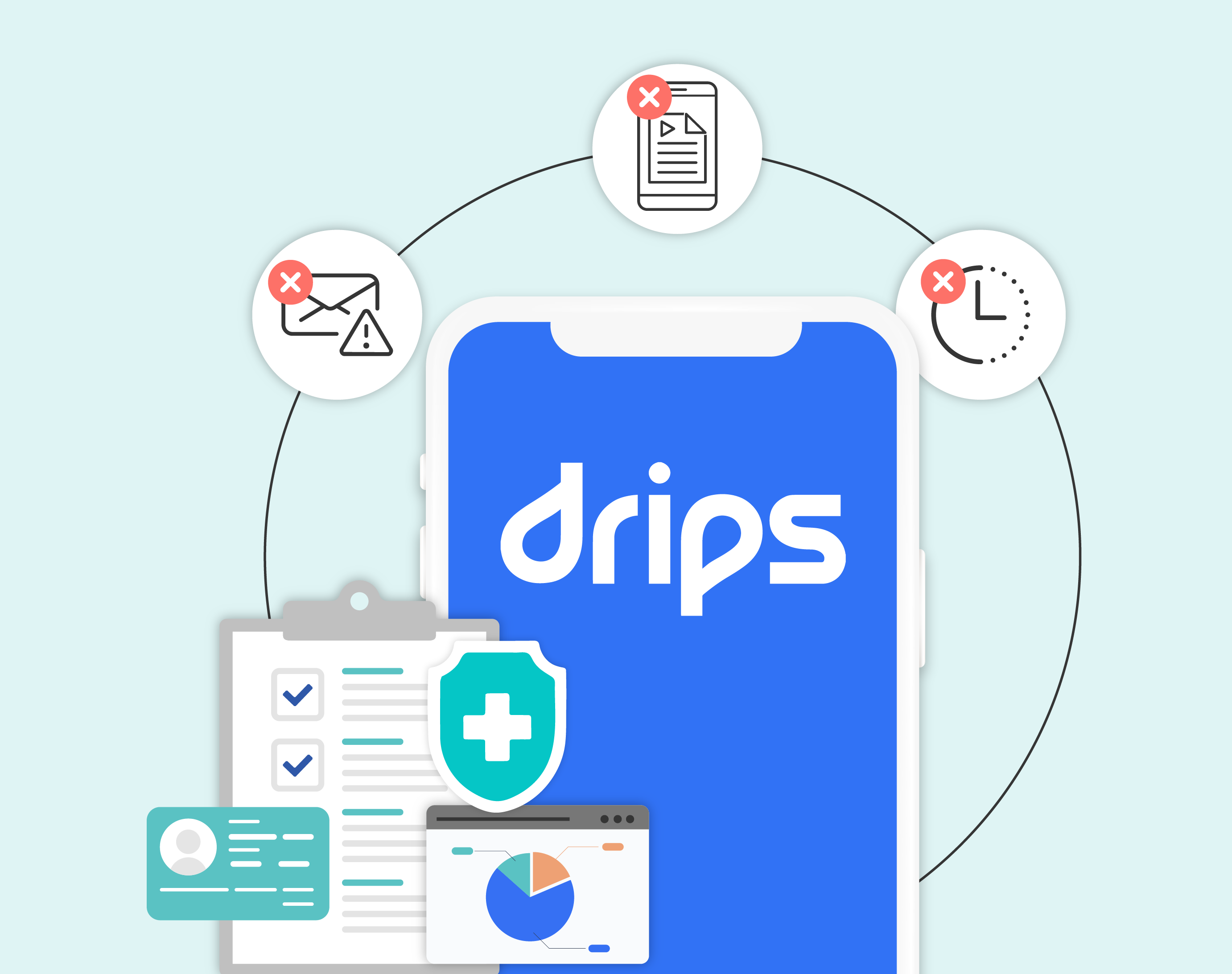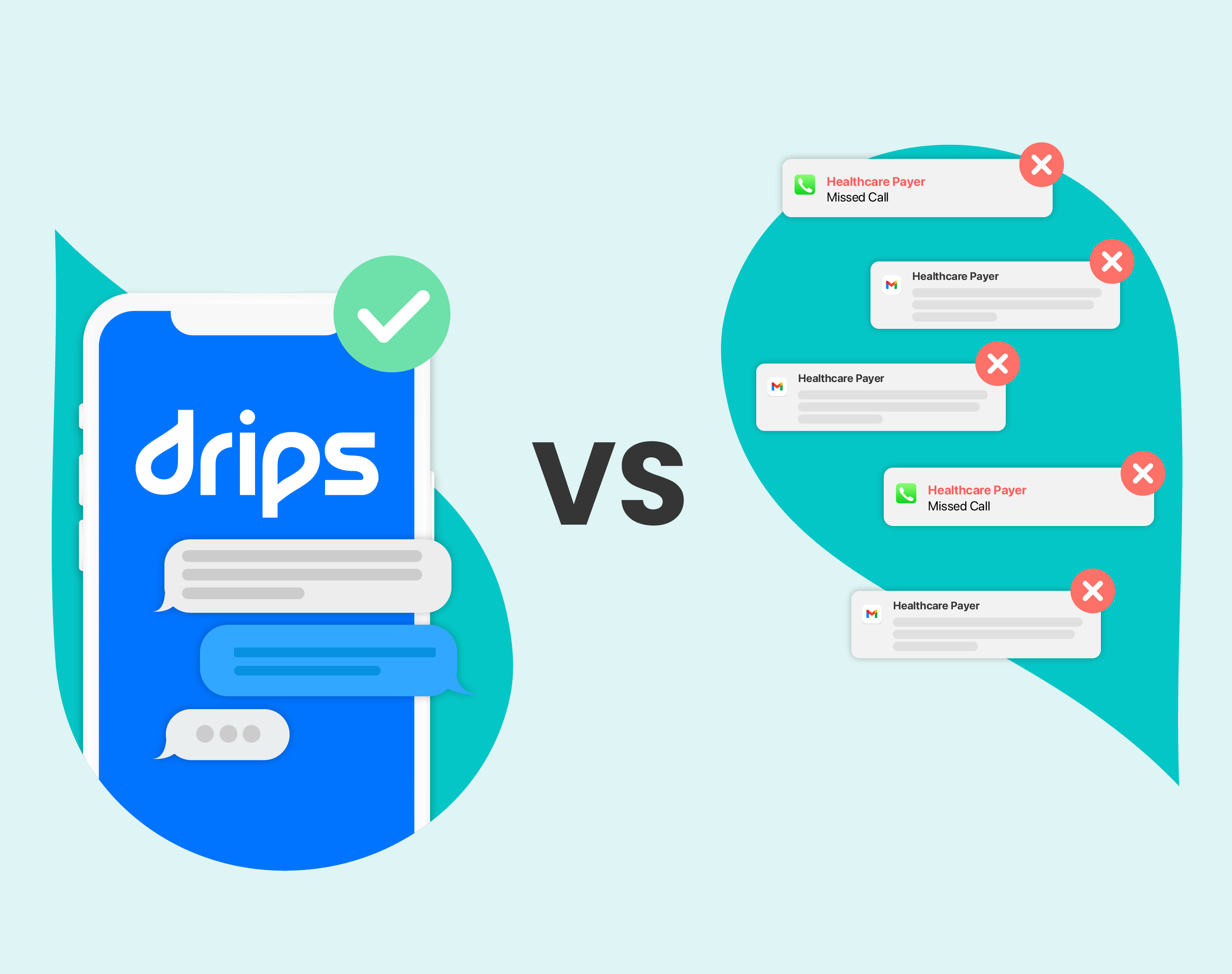Visual Voicemail by Drips
Current answering machine detection (AMD) technology is meant to tell when an answering machine picks up. But unfortunately, it can be highly unreliable — sometimes in extremely disruptive ways. Imagine a user answering “Hello” with some music in the background. Some AMD systems will interpret this audio as an answering machine and hang up on the customer!. This creates a horrible user experience, even if it happens to a small group of people.
Erroneous Voicemails
Have you ever gotten a weird voicemail that says something like: “To leave a message, press 5,” and that’s it? You’re not alone. Not only are voicemails like that annoying, but they’re also not contextually relevant and could be noncompliant. Ultimately, this can result in a poor user experience, especially if someone gets a 30-second voicemail filled with a partial message lacking important context (like the business’ name).
Even if you successfully implement AMD, depending on the provider, carrier, consumer phone, and OS combination, you can’t expect a consistent outcome. You still run the risk of leaving partial voicemails.
Visual Voicemail By Drips
Automatic voicemail detection is not foolproof and often means you could be hanging up on real people or leaving a portion of a recording in your audience’s mailbox.
Drips developed a proprietary methodology that is both carrier- and phone-specific to leave quality voicemails at scale. Our AI technology leaves voicemail messages the way they are intended to be left — as if they were coming from a real person.
With Visual Voicemail by Drips, your audience will receive clear and actionable voicemails that drive action whether they are listened to or read via transcription.
Carrier-Specific Settings
Each carrier has different voicemail settings. For example, Verizon’s key prompts of deleting, skipping, or rerecording a voicemail message is different than AT&T's. Based on the consumer’s carrier, Drips will initiate a series of specific dial tone commands which should delete what otherwise would be a potentially partial voicemail. Then, Drips will rerecord a contextually relevant full and compliant voicemail in its place. By seamlessly integrating with various carrier protocols, Drips ensures that potentially partial voicemails are efficiently managed.
Voicemails With Transcription In Mind
The majority of users aren’t actually listening to their voicemails — they’re reading them. That’s why when we’re planning our voicemail scripts, we’re constructing them in a way that’s meant to be read.
Our voicemails are designed, tested, and delivered in a way that’s easily transcribed. Because let’s face it — when’s the last time you listened to a voicemail instead of reading the transcription? If your message can’t be transcribed, it can’t be read easily.
Why The Transcription-First Approach?
It takes less time to skim a message than it does to access your voicemail and listen to it. So, it's no wonder that people prefer the ease of reading a voicemail message.
In a recent survey, 75% of the respondents showed significant interest in voicemail transcripts (Metaswitch). In other words, more people would engage with voicemails if they could accurately.
Quality Assurance
Our focus with professional voicemail isn’t only on leaving a compliant message that’s informative. We also pay attention to the UX by employing voice actors who are trained in producing clear messages that sound good and can be transcribed accurately. Text-to-speech software just can’t compete with the clear intonations of trained voice professionals. That’s why Drips works with professional voice actors to ensure we're capturing the sound and feel of a specific brand.
Once our voice actors record their messages, we test them with different carriers and phone software to make sure the transcription is uniform. If there are any discrepancies, we work to get them resolved. The result is a standardized message that can be heard and read clearly.
Built With Compliance In Mind
You may think administrative messages are more relaxed, but there are some states that have specific regulations around reaching out for billing reminders, like Massachusetts which only allows for three touchpoints a week for collections.
Drips’ compliance and legal teams track potential regulatory changes down to the state level and propose best practices and solutions to help you keep messaging compliant.
Opt-Outs
Voicemail, as with all automation and telephony, is highly regulated. That’s why we don’t just monitor specific areas for changes, we also follow industry best practices and your business policies, including a way for your audience to opt out of a campaign without needing to talk to a human.
See The Difference
Want to experience our proprietary voicemail methodology for yourself? Using the right cadence of voicemails, texts, and scheduled calls will yield the best balance for your conversational outreach campaign. Join the other enterprises and brands who have experienced an average 10% boost in performance to their existing campaign.
Embrace the convenience of Visual Voicemail by Drips and give your audience a simplified way to enter your campaign, with proper context in less time and a click (or tap) to call instantly.









